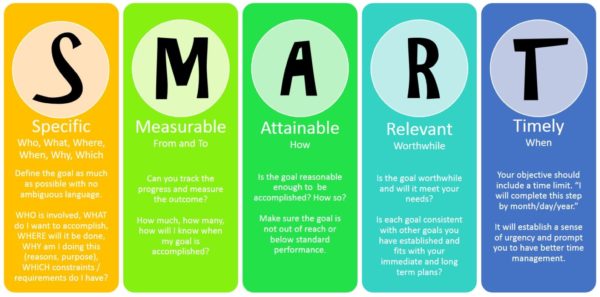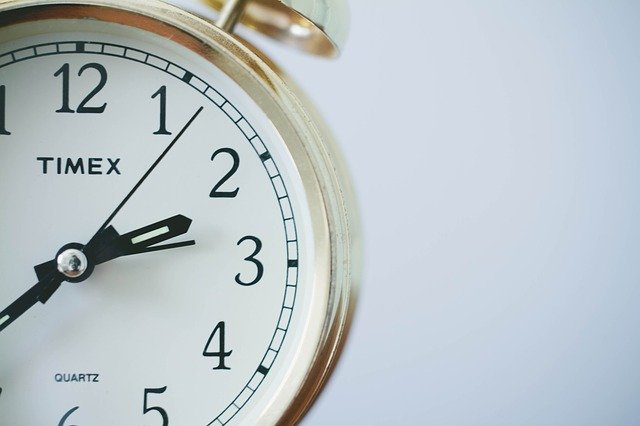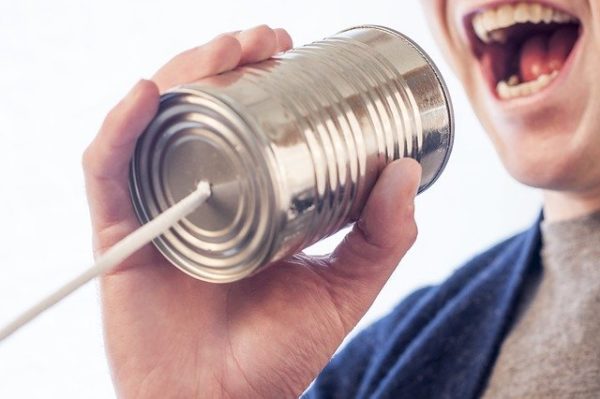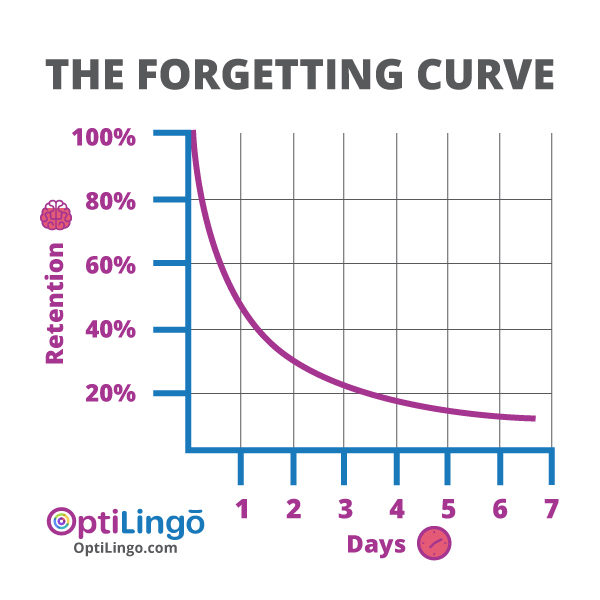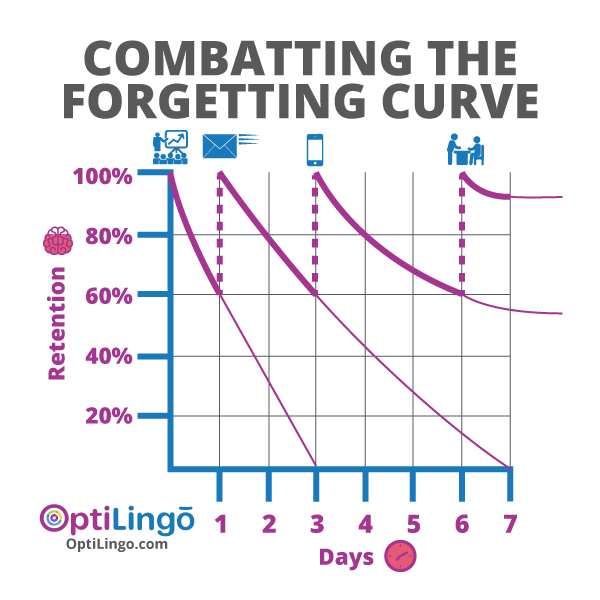Your Crash Course to Speaking a New Language
Maybe you’ve got a trip coming up. Or a language exam. Or maybe you just want to impress someone with foreign language knowledge quickly. Learning a language in record time is entirely possible. And THIS method is the fastest way to learn any language.
Guaranteed.
You don’t need talent to learn a language. Or, to be gifted, start young, or spend a whole lot of money to reach fluency. After all, everyone’s learned at least one language before—their native language. This means that anyone can learn a new language. Learners of all ages master languages, so there’s nothing stopping you from achieving your goals.
Overview of Learning a New Langauge Quickly
Some people might think that learning a language generally takes a lot of time and effort. It doesn’t. As long as you know the right tricks and strategies to help you get the most out of every minute you put into reaching fluency. That’s why we created this guide: our goal is to fast track your language learning journey.
Make no mistake, reaching true fluency in a foreign language can take some time. But that doesn’t mean it needs to take A LOT of time. If you’re looking for a quick way to start speaking a new language on a tight deadline, then you need the fastest way to learn a language. And that’s exactly what this guide gives you. All you have to do is follow these steps. The rest is science.
You can break our guide down into 3 simple phases, each with a specific focus to help you reach fluency faster:
- Phase 1: Preparation
- Set a Goal
- Determine Your Timeframe
- Start with the Right Mindset
- Understand How Language Learning Works
- Focus on High-Frequency Words and Phrases
- Translate Your Material
- Phase 2: Get Started
- Practice Your Phrases Right
- Remember Your Lessons Effectively
- Phase 3: Foreign Langauge Mastery
- Get the Most Out of Immersion
- Deal with Language Learning Anxiety
- Remember Your Do’s and Don’ts
So, what do you say? Ready?
Phase 1 – Prepare Yourself to Learn a New Language Rapidly
Set a Language-Learning SMART Goal
No matter what your motivation for learning a language is, you need to have a goal. And you need a strategy to help you reach that goal. Language learning best practices mean setting SMART goals. The more specific your goal is, the easier it is to work towards accomplishing it. Here’s what SMART goal stands for:
An ideal SMART goal you when starting your language learning journey would be something like this:
I will learn 20 new phrases in my first week by using a language learning program of my choice for 2o minutes a day for 5 days. By the end of the week, I will quiz myself out loud to see if I can confidently speak these words out loud comfortably.
This SMART goal is specific, measurable, relevant, attainable, and timely. It’s perfectly feasible for you to learn 20 phrases in a week. And that will support your overall goal of being able to speak a new language quickly.
Fluency vs. Proficiency
Every language learner wants to achieve proficiency or fluency. Despite what you may think, the two are very different.
- Proficiency is mastering a language. You understand the logic, sentence structures, and grammar to the full extent. Forming sentences is just as easy as understanding them. You can easily take a test and achieve great results.
- Fluency is speaking a language comfortably. Although you may not know or use grammar correctly, you can form sentences and make yourself understood by natives. Confidence is key.
If you have limited time to learn a new language, you should focus on fluency. Grammar and proper pronunciation are not as important as you might think. Understanding and being understood is the best language learning goal to have if you want to reach fluency fast.
Determine Your Timeframe to Learn a New Language
If you have an upcoming trip, your deadline is set for you. Or, if you’re simply learning a new language for fun, then you can set your own timeframe to reach fluency. Either way, you need to set a time period to work within. This helps you measure your progress and prioritize language learning in your schedule. Without a clear timeframe, the time it takes you to reach fluency will expand to fill the time you have. That means you’ll waste more time in the long-run. (This is also known as Parkinson’s Law).
Schedule, Routine, Habit Promote Rapid Language Learning
Setting a schedule for language learning is crucial, especially with a limited timeframe. If you want to learn a new language quickly, make learning your biggest priority. The more you practice and the more natural it feels, the more success you’ll have.
When’s the Best Time to Study a New Language?
While you can fit language learning into any time of the day, there are two optimal times. Right after you wake up and just before you go to bed are the best times to review your language lessons.
- Finishing your lessons first thing in the morning gives you momentum. Most people are also more productive in the mornings. For many of us, that’s the best (and easiest) time to avoid interruptions.
- Studying before bed helps you recap your lesson from the morning. It also creates a natural form of a Spaced Repetition System (SRS) to reinforce learning. And it takes advantage of sleep’s ability to build new memories.
Combine Language Lessons with Other Activities
There are so many ways to incorporate language learning into your other daily activities. You can listen to audio files on the way to work; speak to an international friend during your walks; watch videoes in your target language as you cook and clean. By fitting language into these moments, you can optimize your time while progressing with your language lessons.
How Much Time Should You Spend Studying a New Language?
Language learning requires less time than most people think. The truth is, 20-30 minutes every day is enough to make steady progress towards fluency. Spending 5 days a week working towards your language learning goals means that you’ll need (at most) 2.5 hours. Once you realize that there are 168 hours in a week, finding 2.5 hours doesn’t seem too difficult. And anything more is just an added bonus.
What’s the Right Mindset to Rapidly Learn a New Language?
Don’t Stress Out About Fluency
You’re on a tight deadline. And you’re probably worried about achieving quick success. But don’t stress. It’s not going to help. Having a clear mind is much more valuable when you’re learning languages. Not to mention there are A LOT of negative side effects that stress on your health. Those side-effects can wreak havoc on the brain, slowing down your progress.
Stay Motivated
When you feel like your motivation to learn your target language is fading, remind yourself why you started. Being bilingual has many benefits. You won’t just gain language skills. You also see reality in a different way. Gain an appreciation for culture. Rediscover your native language. And it’s also good for your brain health: you’ll have a better fighting chance against Alzheimer’s by being bilingual. Think of that if your motivation starts to dwindle.
Set Realistic Expectations
The truth is, you won’t be proficient in a week. But you can start speaking to locals without years and years of practice. Knowing 20 phrases, for instance, is a small step in the right direction. That’s realistic. But if your expectations are too high, then you’ll end up ignoring the progress you’re making along the way. And after a while, you’ll feel like you’re not getting any closer to speaking like a local. You may even give up…
To keep from giving up, you need to set realistic goals and celebrate your victories when you accomplish them.
Understand How You Learn a Language
There are two important theories you need to know if you want to learn how to speak a foreign language like a local quickly. By understanding these concepts, you’ll be less likely to waste your time or get frustrated on your language-learning journey.
Focus on Comprehensible Input
Comprehensible input is study materials that you can mostly understand through context or what you already know. Even if you don’t know every individual word, you can guess its meaning. Language learning lessons that focus on comprehensible input are roughly one level above your current knowledge. Not too hard or easy. It’s like the Goldilock’s Zone for learning to speak like a local: the material is just challenging enough to keep you engaged.
You need to incorporate comprehensible input into your study materials. With it, you can learn effectively and efficiently without getting bored or overly frustrated by new material that you can’t quite seem to understand.
Use Spaced Repetition Systems
Your brain is always trying to forget. You need to use this to your advantage when you’re learning a language using spaced repetition systems (SRS). The most effective language learning programs use some form of SRS to help you remember the material. And the best ones make use in a way that helps you master a language without memorizing.
If you don’t want to use a language learning program, you can create your own SRS study system on your own with a little time and work. After going through a certain number of words in your essential vocabulary list, take a break. Then, you should revisit your lesson. Continue to increase the time between lessons.
You’ll realize that you can’t remember everything on your list. That’s ok. (In fact, that’s perfect). Repeat your lessons to tell your brain how important that information is. After a bit of struggling, you’ll remember your target phrase. As you progress, return to the material at gradually longer time periods. This will help strengthen your memory of the material, pushing it deeper and deeper into long-term memory.
Focus on High-frequency Words and Phrases
Most modern languages contain anywhere from 25,000 – 35,000 actively used words. According to the Pareto Principle, only 20% of this vocabulary makes up 80% of any native speaker’s daily speech. By targeting crucial words and phrases, you can quickly learn most of the words that you’ll need. That means you’ll remember more and get speaking faster with less effort.
Review Minimal, Essential Vocabulary
If you’re looking to start speaking rapidly, you only need the most crucial vocabulary. These essential “survival” phrases are easy to learn, and you use them to start communicating with locals easily. That means you can ditch the awkward phrases so many language learning platforms strangely cling to despite the poor results they bring.
(Really, how many times do you need to talk about bears in funny pants or ask strangers how big their apartments are? It’s time to ditch those old, dated phrasebooks.)
You don’t need to speak in full sentences with perfect grammar either. Knowing only the most essential and simplified language is enough. You’re not going to be giving a comprehensive lecture at a university or reciting poetry in perfect cadence. You’re learning enough of a language to survive.
Recognize Cognates and False Cognates
Cognates are your friends when you’re trying to learn a language quickly. Cognates are words that are similar in your target language and English. Sometimes they’re even spelled the same. Other times, you pronounce them the same. Best of all, you can quickly expand your vocabulary by familiarizing yourself with them. Words like “internet”, “metro” or “banana” are a few words that are generally the same in other languages.
However, be aware that there are false-cognates too. These “false-friends” are words that look or sound similar, but in fact, they have very different meanings. Sometimes even inappropriate ones… Be wary of these. You don’t want to potentially embarrass yourself when you’re talking to a native.
Be Careful About Formal vs. Informal Speech
Many languages distinguish formal and informal ways to interact. Sometimes these have very different grammatical rules and expressions associated with them. And there are certain cultural cues you have to follow. Make sure you tailor your vocabulary to fit this. You wouldn’t want to be in a situation where you offend someone.
Learn Relevant Words
You’re learning a foreign language for a reason. Whether it’s to navigate in an unknown city or show your respect to a potential business partner. You need the right vocabulary to suit your needs. Anticipate what your conversations in your target language may be, and add those situation-specific words to your vocabulary. You’ll be grateful to have those at hand when the time comes.
Don’t Worry About Grammar
There’s no point concentrating on grammar if you’re on a tight deadline. You’re aiming to be understood by locals. To achieve that, you have to enhance your vocabulary. The more words you know, the better. Native speakers will understand you regardless of your grammar.
Translate Your New Language
Translation is an art form. But thanks to the Internet, these high-frequency words and phrases can be easily translated to your target language. You can also search for YouTube videos and pronunciation tips to get you speaking correctly.
Phase 2 – Start Speaking a New Language NOW!
Practice Your New Phrases
Once you have your goal, your timeframe, the right mindset, a schedule, and a translated list of high-frequency phrases, you’re ready to start practicing. Sit down with your list, and read them out loud. Don’t be afraid to speak from day one. The only way to successfully achieve fluency is to start practicing as soon as possible.
Writing the words down by hand can also be helpful. Handwriting is linked to tactile learning. Once you’re through your daily set of words and phrases, it’s useful to review them later.
Master This Pronunciation Trick
If you’re trying to say foreign words without listening to them first, chances are your pronunciation won’t be good. Without a teacher or a native speaker to help you, your options are limited. Try searching for a video on YouTube where you can hear how your vocabulary is pronounced. You can also take advantage of Google Translate.
Remember Your Language Lessons
Our memories work on a curve, something Ebbinghaus called “The Forgetting Curve” to be precise. Imagine that you learn something new on Day 1. The next day, you’ve already begun to slowly forget it. By Day 7, you remember less than 20% of what you studied on the first day. Here’s what the Forgetting Curve looks like:
The only way to offset “The Forgetting Curve” is with spaced repetition. And the best time to revisit the previous material is when you start to forget it. So, you want to space those intervals out over time, revisiting material further and further apart. If you study on Day 1, for instance, then review on Day 3. That will bounce the curve back, helping you remember the information a little longer. As time goes on, you’ll space those sessions out. That’s the most effective way to remember your language lessons.
Use Mnemonics to Help Remember New Words
You can learn them quicker with mnemonics. Mnemonics are memory devices to help you better remember new concepts without trying to learn it through brute force. Pictures, songs, and rhymes are great mnemonic devices. And they’re extremely effective. By building a story with those words in it, for example, you’ll pair those new concepts with a structure that help you remember your language lessons better.
Phase 3 – Speak a New Language Like a Local
Effectively Immerse Yourself in a New Language Quickly
Congratulations! You learned the basics of a language in record time. You mastered your vocabulary list, and it’s time to put it to the test. Immersion is the ultimate language learning program. Every interaction is an opportunity to learn more about your target language and culture. Here’s how to do it right.
Ditch English
It may be tempting to start speaking to the locals in English. But you have to move outside of your comfort zone. You can practice what you learned, and you can learn something new too.
Don’t be afraid to make mistakes in your target language. If the locals correct you, take it as a compliment. It means they like you and care about you enough to help you learn a new language. They’re the best teachers after all.
You Don’t Need To Go Abroad to Immerse Yourself
The cost of traveling can make immersion an inaccessible experience for some people. But you can experience a version of it around your home too.
Find friends, watch movies, and listen to music in your target language throughout the day. All it takes is a little motivation and some research, and you can bring that foreign country home to you. What matters is that you’re creating opportunities to expose yourself to your target language. Continue on that path and fluency will follow.
Avoid Language Learning Anxiety
One of the most common issues faced by language learners is a feeling of anxiety when attempting to speak in a new language. Being self-conscious creates mental barriers. This can slow your progress substantially. And it can also take away the pleasure of putting your new knowledge to work. So, don’t be shy.
Don’t be afraid to make your sentences longer either. Even if they aren’t grammatically correct. Whoever you’re talking to will appreciate your effort. Remember: one-word answers don’t make for good conversations.
Ultimately, the ball is in your court. You’re making the effort to speak a foreign language. That means that you acquired a unique skill you should be proud of. And the locals will appreciate that you tried to learn their language.
Language Learning Do’s and Don’ts
To give you the best advantage, here’s a list of what to do and what not to do during your language-learning crash course. Avoid these pitfalls and double down on the most effective methods to reach fluency in record time.
When learning a New Language DO:
- Try to immerse yourself as much as possible. Watch TV, read newspapers, and listen to audiobooks in your target language. The more exposure you have, the faster your language learning progresses.
- Learn about the culture. If you appreciate the people and their history, you’ll enjoy learning your target language more.
- The fastest way to learn a new language is by having fun. Make sure you enjoy the process to get the most out of it. Be confident, and time will fly by faster than you think.
When trying to reach fluency fast DON’T:
- Cramming never helped any language learner. Say goodbye to traditional language education. If you want to teach yourself successfully, you need to focus on understanding your material. Link it to already existing knowledge.
- Having insanely high expectations will only cause disappointment. You need to be realistic. You can achieve survival level language quickly. But to deepen your knowledge and understanding of the language, you need grammar and linguistics. And that takes time. Even the fastest language learning methods can’t compete with the value time can provide.
- Never settle for bad language learning resources. Just because a program or app is free, it doesn’t mean it will be effective. And if you have a deadline, you can’t afford to waste time on inefficient methods. If you want to learn how to speak quickly, you’ll need to find a program that gets you speaking. Typing won’t help.
- Don’t count words. Fluency isn’t about having a large stack of vocabulary words. It’s about speaking comfortably.
- Never study a language like a school subject. Language is a method of communication. It’s a tool to be used. Treat it as an accessory.
- Don’t worry. Every lesson gets you closer to fluency, even if you don’t think it does. Your progress is inevitable if you put the time and effort into it. Chances are, you probably know much more than you give yourself credit for. So keep trying, and you’ll reach fluency in no time.
Final Thoughts on Learning a New Language Quickly
Congratulations! You achieved an amazing feat. Learning the basics of a language in an extremely short amount of time is very impressive. You applied your knowledge, had conversations with locals, and you gained invaluable life experiences.
But why stop there? Continue your language lessons. They’re part of your routine now. And there’s nothing stopping you from exploring your target language and its culture has to offer. Raise your knowledge to proficiency to enhance your brain health, career prospects, and see the world in a completely different light.
Experience the FASTEST Way to Learn a Language with OptiLingo
We built OptiLingo for struggling language learners, tired of programs that continue to let them down. Our language learning app builds on all the strategies covered in this guide, streamlining the language learning process. The result is a program that uses comprehensible input and spaced repetition that covers the most high-frequency phrases in your target language.
You’ll reach fluency in record time thanks to these cutting-edge methods. All you need to do is download the app and get started. And in just 20 minutes a day, you can fast-track your path to fluency.
But don’t take our word for it. See for yourself…




